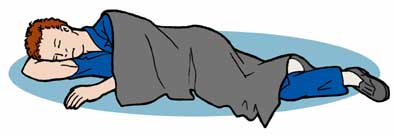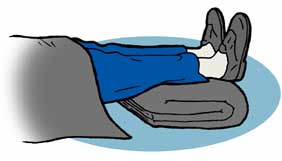

Anatomy of First Aid: A Case Study Approach
Ronald Bergman, Ph.D.
Peer Review Status: Internally Peer Reviewed
Fumes from any unknown source may be flammable! Before proceeding to assist a shipmate in a "smoke-filled" room do not light a match, use a candle, or even turn on a light switch. Do not produce a flame or spark in the presence of gas or unknown sources of fumes.


The cruiser returned to port for refitting and the Executive officer was told to have the deck crew remove the rust on the ship, to chip loose paint and to repaint those areas. The Chief went with a crewman to the paint locker to inventory existing supplies. On entering the locker they encountered overwhelming fumes, were quickly overcome, and collapsed before they could escape the room. Because the Chief was needed for another problem another crewman went to the paint locker to find him. He smelled the fumes and remembered that he might need more assistance when he got to the locker. He also remembered the admonition about sparks and flames and also the need for a hospital corpsman. The Sailor told these things to another shipmate to get help and he and still another Sailor proceeded to the locker. Although dark, he could make out two bodies on the deck. The two Sailors took several deep breaths of fresh air, inhaled and then held their breath. In cases where smoke and fumes are visible above the floor they would stay below them but in this case the paint fumes were evenly dispersed in the entire room. They removed the two men into an area with fresh air and examined the two men for breathing. One was still breathing but the Chief was not. The prompt arrival of the corpsman began with attempts at artificial respiration to restore breathing. Eventually the corpsman was successful and the Chief began to breathe on his own. The corpsman made a quick check of the victim's eyes and skin to see if the fumes were toxic enough cause visual problems. The eyes were clear but were flushed with clean (or sterile) water. Before the Sailors could be moved they were treated for shock. Their vital signs were assessed and found satisfactory but weak. The Chief was placed on his back with his head and chest slightly elevated. The Chief was unconscious and vomited. He was placed on his side and his knee of his top leg was bent to help him from rolling forward. Both Sailors were covered with blankets to lessen shock and were finally taken to sickbay for observation.
The corpsman provided additional information. The effects of inhaled smoke, gas, and fumes from other sources may not be totally evident immediately. A thorough medical examination is necessary, and a period of observation in sickbay may be beneficial should other symptoms or signs appear subsequently.
Please send us comments by filling out our Comment Form.
All contents copyright © 1995-2024 the Author(s) and Michael P. D'Alessandro, M.D. All rights reserved.
"Anatomy Atlases", the Anatomy Atlases logo, and "A digital library of anatomy information" are all Trademarks of Michael P. D'Alessandro, M.D.
Anatomy Atlases is funded in whole by Michael P. D'Alessandro, M.D. Advertising is not accepted.
Your personal information remains confidential and is not sold, leased, or given to any third party be they reliable or not.
The information contained in Anatomy Atlases is not a substitute for the medical care and advice of your physician. There may be variations in treatment that your physician may recommend based on individual facts and circumstances.
URL: http://www.anatomyatlases.org/